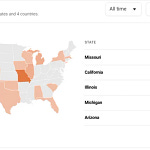From the latest piece from The Embassy - Do You Believe in Miracles?
An Excerpt …
When it comes to the paranormal, the extra-terrestrial, unexplained phenomena or UFO’s … we are a bit conflicted. We want there to be more, we hope we are not alone, we want the believe there is a truth that is out there, while we have a hard time actually believing in any particular piece of evidence. The recent release of data related to UFO’s (inexplicably renamed UAP’s - unidentified aerial phenomena), has peaked interest, but has mostly disappointed.
Sister Wilhelmina Lancaster was the founder of Benedictines of Mary, Queen of the Apostles at the Abbey of Our Lady of Ephesus just north of Kansas City. Sister Wilhelmina, who died at the age of 95 in 2019 was known for her “devotional poetry, her sense of humor and her fierce piety.”
Four years after burying Sister Wilhelmina, the order’s founder, in a simple wood coffin in a corner of the property, the sisters decided to move her body into a customary place of honor inside their church.
When they opened the coffin, expecting to find bones that could be easily cleaned and placed in a new box, they instead found what looked and even felt remarkably like Sister Wilhelmina herself. Her face was recognizable, even after years in a damp coffin, and the sisters said that her beloved habit was “immaculate.”
For the Benedictines of Mary, this immediately signaled that Sister Wilhelmina may be an “incorruptible,” a term the Catholic Church uses to describe people whose bodies — or parts of their bodies — did not decompose after death. Believers in the phenomenon say there have been more than 100 examples worldwide, mostly in Europe.
Michael O’Neill, who hosts a national radio show called “The Miracle Hunter” on the Catholic station EWTN, said that the case of Sister Wilhelmina, who was Black, was especially distinctive. “There’s never been an African American incorruptible; in fact there’s never been an American of any sort who’s an incorruptible,” he said. “So this is big news.”
A Miracle in Missouri? The Nun Who Put Her Abbey on the Map. - The New York Times
I believe in miracles. I believe that God intervenes in His natural order in various ways. People who take the bible as generally more literal and actual than merely figurative tend to believe in miracles. We believe that Jesus walked on water. We believe Jesus turned water into wine. But even for those of us who believe in miracles, we are confused by some of them. We may even be embarrassed by some of them. Why would God preserve the body of a Sister in Kansas City? I don’t know. I am not Catholic, so I wouldn’t say her body was preserved because her theology was more correct than everyone else. I guess that isn’t the standard. Huh. At the same time, I am not looking for some other explanation, necessarily. This could be an act of God. I’ll assume that it is unless I see some reason to doubt it. “This is impossible” or “that can’t happen” or “God doesn’t usually do that” or even “I don’t know why God would do that” are all poor reasons to believe that God didn’t do that. Only if you believe there isn’t a God capable of such things can you rule it out - and that is where many people rule miracles out. If this is a work of God, I am not sure why He chose this work - but I guess that shouldn’t surprise me. Lots of acts of God, some of them interventions in the natural order, surprise me. Even those of us who believe in miracles can look at a couple of them sheepishly. Maybe even this one (if it is one).
Links
A Miracle in Missouri? The Nun Who Put Her Abbey on the Map. - Ruth Graham, The New York Times














Share this post